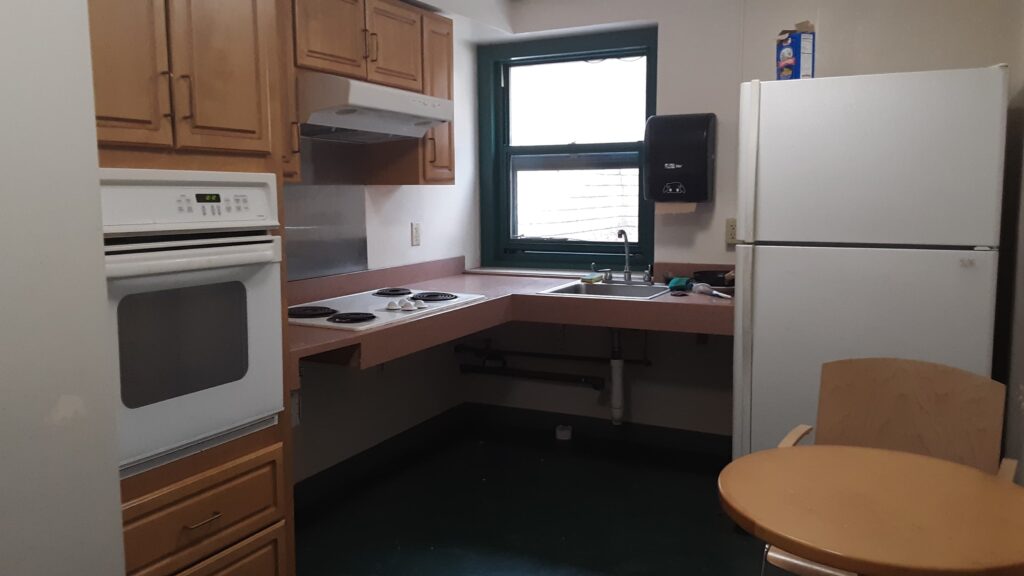
Moving into college is an exciting time filled with new experiences and opportunities. One of the first decisions you’ll face is choosing your living arrangements, specifically whether to live in a dorm room. A common question that arises during this process is: do dorm rooms have kitchens? The answer isn’t always straightforward as it varies significantly depending on the university, specific dorm building, and even the type of room you choose.
This article will delve into the world of college dorm kitchens, exploring the different types of kitchen facilities available, the pros and cons of shared kitchens versus individual kitchenettes, and most importantly, why thorough research is crucial when selecting your dorm based on kitchen options.
Dorm Room Kitchens: A Common Question
The presence or absence of a kitchen in a dorm room can significantly impact your daily life and overall college experience. For some students, having access to cooking facilities is essential for maintaining a healthy diet, saving money on meals, and enjoying the comfort of preparing their own food. Others may be perfectly content with relying on dining halls or nearby restaurants.
Understanding your personal needs and preferences regarding kitchen access is the first step in determining which dorm option best suits you. Consider factors like your cooking habits, dietary restrictions, budget, and social lifestyle. If you enjoy cooking and value having control over your meals, a dorm with kitchen facilities will likely be more appealing. Conversely, if you’re comfortable with dining hall options or prefer the convenience of takeout, a dorm without a full kitchen might be sufficient.
Kitchen Amenities in College Dorms

College dorms offer a range of kitchen amenities, from fully equipped shared kitchens to basic kitchenette setups within individual rooms.
Fully Equipped Shared Kitchens: These kitchens are typically located on each floor and are shared by all residents on that floor. They usually include appliances like refrigerators, ovens, stoves, microwaves, dishwashers, and ample counter space. This setup allows for communal cooking and socializing, fostering a sense of community among dorm residents.
Individual Kitchenettes: Some dorms offer individual kitchenettes within each room or suite. These typically consist of a mini-fridge, microwave, and sometimes a small sink. While they provide basic cooking capabilities, they lack the full range of appliances found in shared kitchens.
No Kitchen Facilities: Certain dorms may not have any dedicated kitchen areas. In these cases, residents rely on dining halls or nearby restaurants for their meals.
Shared Kitchens vs. Individual Kitchenettes
Both shared kitchens and individual kitchenettes offer distinct advantages and disadvantages that should be carefully considered when choosing a dorm room.
Shared Kitchens:
Pros:
- Access to a wider range of appliances and cooking equipment.
- Opportunity for communal cooking and socializing with other residents.
- Potentially lower cost per person if shared expenses are divided evenly.
Cons:
- Potential for noise and clutter during peak cooking hours.
- Need to coordinate schedules and share space with others.
- Increased risk of food contamination or theft if cleanliness standards aren’t maintained.
Individual Kitchenettes:
Pros:
- Privacy and convenience of having your own cooking space.
- Greater control over hygiene and sanitation.
- Flexibility to cook at any time without disturbing others.
Cons:
- Limited cooking capabilities due to smaller appliances.
- Higher cost per person if individual kitchenettes are not included in the dorm room price.
- May lack space for storing large quantities of food or cookware.
Importance of Researching Kitchen Facilities

Thorough research is essential when selecting a college dorm based on kitchen facilities.
Don’t rely solely on general descriptions provided by the university website. Contact the specific dorm office, visit the campus in person if possible, and speak to current residents to gain firsthand insights into the available kitchen amenities and their functionality. Pay attention to details like the number of appliances, counter space, storage options, and cleaning policies.
Choosing a Dorm Based on Kitchen Options
Ultimately, the best dorm for you will depend on your individual needs and preferences regarding kitchen facilities.
If cooking is a priority, prioritize dorms with fully equipped shared kitchens or individual kitchenettes. If you’re comfortable with dining hall meals or takeout options, a dorm without a full kitchen might be sufficient. Consider factors like your budget, social lifestyle, and desired level of independence when making your decision. Remember, choosing the right dorm can significantly impact your overall college experience, so take the time to research and select an option that best suits your needs.
Conclusion
Navigating the world of college dorms and their kitchen amenities can seem overwhelming at first. However, by understanding the different types of facilities available, weighing the pros and cons of shared kitchens versus individual kitchenettes, and conducting thorough research, you can confidently choose a dorm that aligns with your lifestyle and preferences. Remember, having access to convenient and suitable kitchen facilities can enhance your college experience, allowing you to enjoy home-cooked meals, save money, and foster a sense of community with fellow residents.
